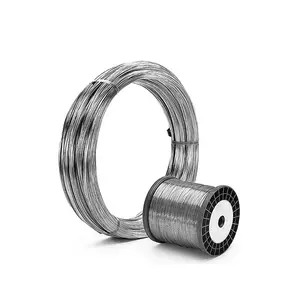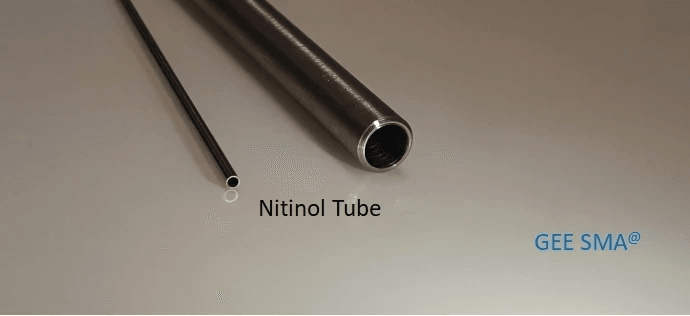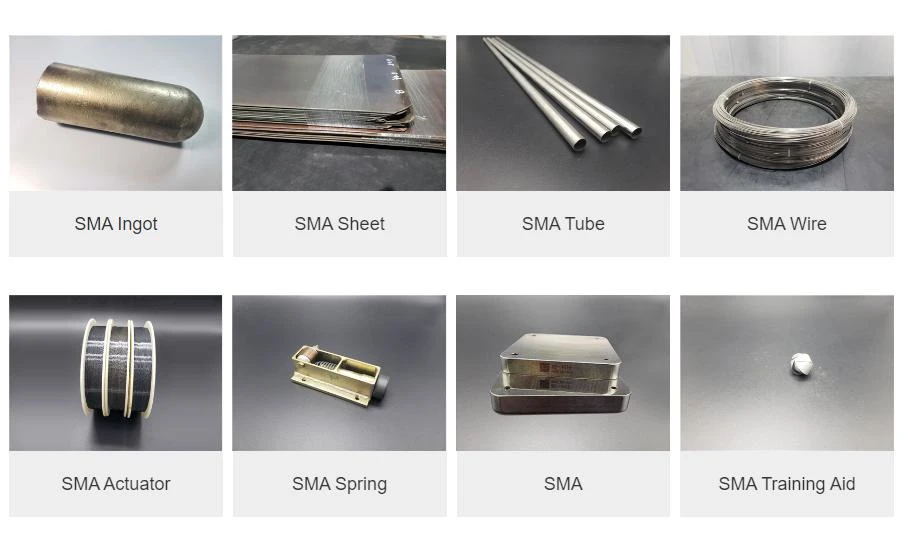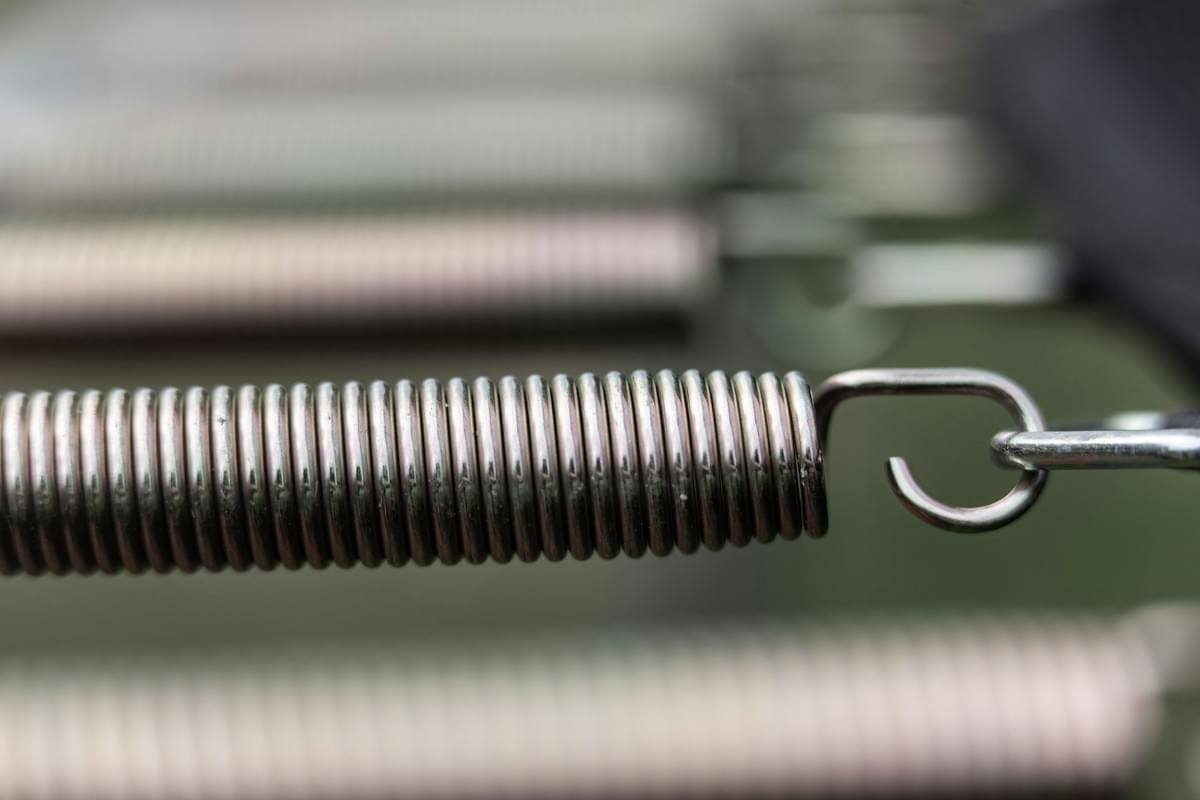Introduction

Nitinol, a remarkable shape memory alloy, has captured the attention of industries and researchers alike due to its unique properties. This metal can return to a predetermined shape when heated, making it an essential material in various applications from medical devices to robotics. But what exactly is it that makes nitinol so special, and how does its functionality come into play?
What is Nitinol and Its Uses
Nitinol is primarily composed of nickel and titanium, forming a fascinating alloy known for its ability to undergo significant deformation while retaining the capacity to revert back to its original form upon heating. This characteristic leads us to the question: why is nitinol a shape memory alloy? The answer lies in its unique crystalline structure that allows this transformation, making nitinol invaluable in fields such as medicine for stents and guidewires, as well as in actuators for robotics.
The Science Behind Shape Memory
The science behind shape memory involves intricate changes at the atomic level within the nitinol shape memory alloy. When cooled below a specific temperature, the atoms rearrange into a different structure that allows for deformation; upon heating, they revert back to their original arrangement—hence the term shape memory. This phenomenon not only explains why nitinol is classified as a shape memory alloy but also showcases its potential across diverse applications.
Applications of Nitinol in Industry
In industry, nitinol's versatility shines through in numerous applications ranging from aerospace components to cutting-edge medical technologies. Surgical instruments made from this alloy benefit from both superelasticity and shape memory features, allowing for minimally invasive procedures with enhanced patient outcomes. As we delve deeper into the world of nitinol, we uncover not just how it’s made—what is shape memory alloy made of?—but also why is nitinol so expensive? Understanding these factors will shed light on its growing role across different sectors.
Nitinol: A Dual Personality

Nitinol is often celebrated for its remarkable dual properties: superelasticity and shape memory. These characteristics set it apart from other materials, making it a fascinating subject in the world of alloys. Understanding these traits not only highlights why nitinol is a shape memory alloy, but also showcases its versatility in various applications.
Understanding Superelasticity
Superelasticity is one of the standout features of nitinol shape memory alloy, allowing it to undergo significant deformation without permanent change. When stress is applied, nitinol can stretch up to eight times more than traditional metals before returning to its original form once the stress is removed. This unique characteristic makes nitinol an ideal choice for applications where flexibility and resilience are paramount, such as in medical devices and actuators.
The phenomenon occurs due to a phase transformation within the material's crystal structure when subjected to external forces. Essentially, when you bend or twist nitinol, it temporarily alters its shape but retains the ability to revert back—hence why it's classified as a shape memory alloy. This capability raises questions like “Why is nitinol so expensive?” since producing such specialized materials involves intricate processing techniques.
Mechanism of Shape Memory
The mechanism of shape memory in nitinol relies on its ability to remember an original predetermined shape after being deformed under specific conditions. When heated above a certain temperature known as the transformation temperature, the alloy returns to its pre-deformed state—like magic! This unique behavior answers the question: What is shape memory alloy made of? Typically comprising nickel and titanium, this composition allows for precise control over thermal and mechanical properties.
The interplay between temperature and stress plays a crucial role in how effectively this mechanism operates. For example, if you were to cool down a bent piece of nitinol quickly and then heat it again, you'd witness an impressive transformation back to its original form. This fascinating aspect not only enhances functionality but also opens doors for innovative applications across industries.
Distinguishing Nitinol Variants
While all forms of nitinol share core characteristics that classify them as shape memory alloys, there are distinct variants tailored for specific uses that set them apart from one another. The primary types include Nitinol 55 (with 55% nickel) and Nitinol 60 (with 60% nickel), each offering different mechanical properties suited for various applications—like stents or guidewires in medical technology.
Understanding these distinctions helps answer questions like “How is nitinol alloy made?” The manufacturing process involves precise control over elemental ratios during melting and subsequent heat treatments that define their functional capabilities under different conditions. Moreover, knowing these variants allows industries to choose the most suitable type based on their specific needs while considering factors like cost—prompting inquiries into why some variations might be pricier than others.
The Chemistry of Nitinol

Nitinol, a remarkable shape memory alloy, is primarily composed of nickel and titanium. This unique combination gives it the ability to return to a predetermined shape when heated above a certain temperature. Understanding what this alloy is made of helps clarify why it exhibits such extraordinary properties and why it’s often the go-to material in various applications.
What is Shape Memory Alloy Made Of
A shape memory alloy like nitinol is mainly composed of nickel (about 55%) and titanium (approximately 45%). This specific ratio is crucial because it determines the thermal and mechanical properties that enable the shape memory effect. So, when asking, What is shape memory alloy made of? it's essential to note that it's not just about the elements themselves; it's about how they interact at different temperatures to produce those fascinating characteristics.
Elements in Nitinol Alloys
In addition to nickel and titanium, other elements can be added to nitinol alloys to enhance their properties or optimize them for specific applications. For instance, small amounts of copper or iron may be included for improved strength or corrosion resistance. Understanding these additional elements provides insight into why nitinol is so expensive; each element must be carefully balanced during production to achieve desired traits without compromising performance.
How is Nitinol Alloy Made
The process of creating nitinol involves several steps starting from raw materials, where nickel and titanium are combined in precise ratios under controlled conditions. The resulting mixture undergoes processes such as melting, casting, and heat treatment to develop its unique shape memory characteristics. When exploring How is nitinol alloy made?, one must recognize that meticulous attention during manufacturing ensures the final product possesses reliable performance across various applications—contributing further to its costliness in the market.
The Manufacturing Process

Nitinol, a remarkable shape memory alloy, undergoes a meticulous manufacturing process that ensures its unique properties are preserved and enhanced. From sourcing raw materials to production techniques and quality control, each step is crucial in creating this extraordinary material. Understanding how nitinol alloy is made provides insight into why it commands such a high price in the market.
Sourcing Raw Materials
The journey of creating nitinol shape memory alloy begins with sourcing its essential raw materials: nickel and titanium. These elements must be of the highest purity to ensure optimal performance and reliability in applications ranging from medical devices to aerospace components. Given the specific requirements for these metals, finding reliable suppliers who can provide consistent quality is paramount for manufacturers aiming to produce top-tier nitinol alloys.
Why is nitinol so expensive? One reason lies in the cost of these raw materials, which can fluctuate based on market demand and availability. Additionally, sourcing high-quality nickel and titanium often involves navigating complex supply chains that further drive up costs. Hence, careful selection of raw materials not only impacts the overall quality of the final product but also contributes significantly to its price tag.
Production Techniques Used
Once the raw materials are sourced, several production techniques are employed to transform them into a usable form of nitinol shape memory alloy. The most common method involves melting nickel and titanium together in a controlled environment using vacuum or argon atmospheres to prevent contamination. After melting, various processes such as casting or powder metallurgy may be used to create different shapes or forms tailored for specific applications.
Understanding why nitinol is a shape memory alloy requires knowledge of its unique phase transformation behavior during heating and cooling cycles—a characteristic established during these production techniques. Additionally, advanced methods like cold working can enhance superelastic properties while maintaining dimensional stability under stress. The combination of these production techniques ultimately defines how effective the final product will be in real-world applications.
Quality Control in Nitinol Production
Quality control plays an indispensable role throughout the manufacturing process of nitinol alloys—ensuring that each batch meets stringent standards for performance and consistency. Manufacturers implement rigorous testing protocols that assess mechanical properties, phase transformations, and chemical composition before any product reaches the market. This attention to detail guarantees that every piece of nitinol shape memory alloy performs reliably when put under stress or subjected to temperature changes.
Why is nitinol so expensive? In part due to this extensive quality control process that adds layers of complexity and time investment into manufacturing practices compared to standard metals or alloys. Companies invest heavily in state-of-the-art testing equipment and skilled personnel dedicated solely to maintaining exceptional quality standards throughout production runs. This commitment not only assures customers but also enhances brand reputation—making high-quality nitinol products worth every penny.
Why is Nitinol So Expensive?

When considering the cost of nitinol, one must take into account several factors that contribute to its premium price tag. This unique nitinol shape memory alloy, known for its remarkable properties, is not just a simple metallic substance; it’s a complex material with specific requirements and processes involved in its production. Understanding why nitinol is so expensive requires a closer look at raw materials, production complexity, and market dynamics.
Cost of Raw Materials
The first hurdle in the pricing of nitinol shape memory alloy is the cost of raw materials. Nitinol primarily consists of nickel and titanium, both of which can fluctuate significantly in price based on global supply and demand. Additionally, sourcing high-purity nickel and titanium suitable for creating a reliable shape memory alloy adds to the overall expense—after all, you can't just grab any old metal off the shelf if you want your nitinol to perform like a champ!
Production Complexity
Next up is the production complexity associated with how nitinol alloy is made. The process involves intricate steps such as melting, casting, and heat treatment that require specialized equipment and skilled labor. Each step must be meticulously controlled to ensure that the desired properties—like superelasticity and shape memory—are achieved; this level of precision doesn’t come cheap!
Market Demand Factors
Lastly, let’s talk about market demand factors that influence why nitinol is so expensive. As industries continue to discover innovative applications for this remarkable material—from medical devices to robotics—the demand for high-quality nitinol has surged dramatically. With more companies vying for limited supplies of this sought-after alloy, prices naturally climb higher as businesses compete to secure their share of this valuable resource.
GEE SMA: Leaders in Nitinol Innovation

Overview of GEE SMA
GEE SMA is at the forefront of nitinol shape memory alloy development, offering cutting-edge solutions that cater to diverse sectors such as medical devices, aerospace, and robotics. The company prides itself on its ability to harness the remarkable properties of this unique alloy—properties that allow it to return to a predetermined shape when heated or deformed. By understanding why nitinol is a shape memory alloy and leveraging its capabilities, GEE SMA continues to innovate and set industry standards.
Products and Services Offered
At GEE SMA, you’ll find an impressive array of products that utilize nitinol's unique characteristics. From stents that expand within blood vessels to actuators used in robotic systems, their offerings are designed with precision engineering in mind. Additionally, they provide custom solutions tailored specifically for clients who require specialized applications involving how nitinol alloy is made and utilized.
Commitment to Quality and Customer Needs
Quality is paramount at GEE SMA; they understand that when dealing with materials like nitinol shape memory alloy, even the smallest detail can make a significant difference. Their rigorous quality control processes ensure that every product meets high standards before reaching customers’ hands—a crucial aspect given why nitinol is so expensive due to its complex production techniques. Moreover, their customer-centric approach means they actively listen to client feedback and adapt their services accordingly.
Conclusion

In summary, Nitinol, a remarkable nitinol shape memory alloy, has captivated industries with its unique properties and diverse applications. Its ability to return to a predetermined shape upon heating is not just a scientific marvel but also a game-changer in fields ranging from medical devices to robotics. Understanding why Nitinol is classified as a shape memory alloy involves delving into the intricate interplay of temperature and phase changes that define its functionality.
Key Takeaways About Nitinol
Nitinol stands out due to its dual personality: it exhibits both superelasticity and the classic shape memory effect, making it incredibly versatile. The composition of this nitinol shape memory alloy typically includes nickel and titanium, which work together to create its distinctive characteristics. Additionally, the manufacturing process of how Nitinol alloy is made plays a crucial role in determining its quality and performance, influencing everything from medical implants to eyeglass frames.
Future Potential of Nitinol Alloys
The future potential of nitinol alloys appears bright as innovations continue to emerge across various sectors. Researchers are exploring new applications that capitalize on the unique properties of this nitinol shape memory alloy, potentially revolutionizing industries like aerospace and automotive engineering. As technology advances, we may see even more sophisticated uses for these alloys, raising questions about why Nitinol is so expensive relative to other materials—primarily due to raw material costs and complex production techniques.
Nitinol in Everyday Life
In everyday life, nitinol's presence might be less obvious but is undeniably impactful; think about those nifty self-heating coffee mugs or innovative stents used in medical procedures! These products leverage the extraordinary capabilities of this nitinol shape memory alloy without most people even realizing it. As consumers become more aware of how materials like Nitinol enhance their daily experiences—from convenient gadgets to life-saving medical devices—we can expect an increased demand for these alloys.

